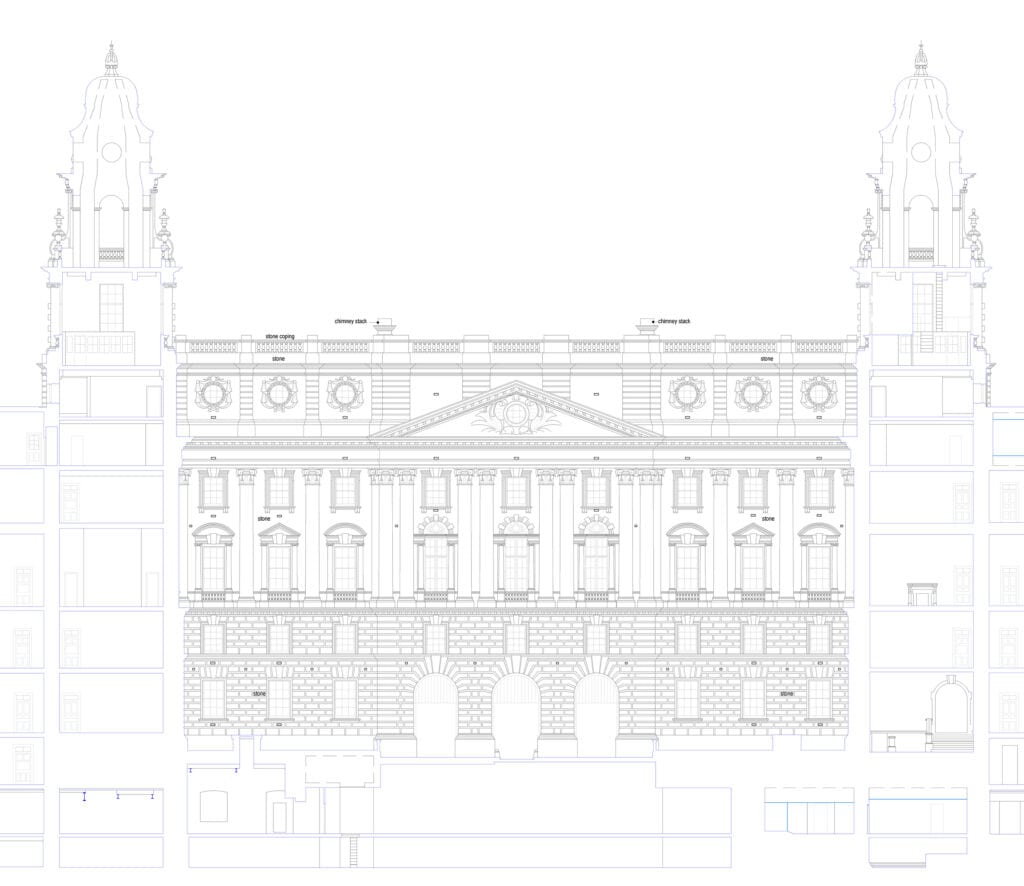Our clients may require an elevation drawing for multiple reasons; it may be required for planning applications, façade retention, rights of light, condition survey, roof survey and drainage alteration survey purposes.
At Michael Gallie & Partners, we advise our clients on what elevation drawing scale they should commission based upon their scope requirements and to make sure that what’s issued is fit for purpose.
Unpacking Elevation Drawing Scales and Their Applications
Elevation Drawing scales serve as a roadmap, guiding architects and designers through the intricacies of a structure. These scales offer diverse details, tailored to meet the varying needs of projects. Let’s delve into the most common scales and what they’re quintessentially used for:
- 1:200 Scale Elevations:
Tailored for Rights of Light, these scales shine in Context Elevations and capturing the essence of Street Scene Elevations.
- 1:100 Scale Elevations:
A go-to for Standard Façade Elevations. They’re also the gold standard for Planning Drawings.
- 1:50 Scale Elevations:
If you’re after Detailed Façade Elevations, this scale has you covered. It’s also preferred for Condition Surveys and Façade Retention projects.
- 1:20 Scale Elevations:
Dive deep into the world of Interior Design with this scale. It also stands out for Architectural Detail Reproduction and Heritage Recording Surveys.
- 1:5 Scale Elevations:
Reserved for the keenest details in Interior Design projects, and unmatched in Architectural Moulding Reproduction and Heritage Recording Surveys.
Does Elevation Drawing Scale Impact Survey Accuracy?
A resounding “No” is the answer here. Whether you’re examining a window’s corner on a 1:200 Scale or a detailed 1:5 Scale, the survey accuracy remains unwavering. The distinction arises in the depth of detail depicted – from the expansive overview in 1:200 Scale to the meticulous intricacies in 1:5 Scale Elevations. Michael Gallie & Partners stand firm on one principle: survey accuracy is sacrosanct, irrespective of the chosen scale.
Conclusion
Elevation Drawings are a cornerstone in the architectural world, marrying accuracy with purpose. By understanding the nuances of each scale, professionals can optimize their design and planning endeavours, ensuring top-notch results every time.
FAQs
1. What’s the primary use of a 1:100 Scale Elevation?
It’s primarily used for Standard Façade Elevations and Planning Drawings.
2. Which scale offers the most detailed view of Interior Design?
The 1:5 Scale Elevation provides the most detailed insights into Interior Design projects.
3. Does a more detailed scale mean more survey accuracy?
No, all scales maintain the same level of survey accuracy. The detail level varies based on the scale.
4. What does Michael Gallie & Partners prioritise in their Elevation Drawings?
Survey accuracy is their top priority, regardless of the scale used.
5. Who can provide guidance on choosing the right Elevation Drawing format?
Sam Lloyd at Michael Gallie & Partners is a seasoned expert who can guide on 2D or 3D Elevation Drawing formats.


